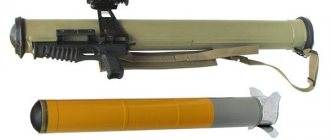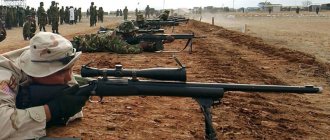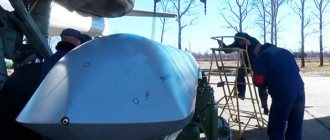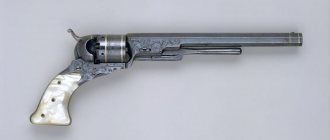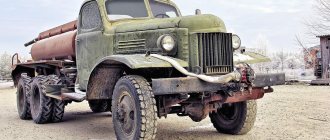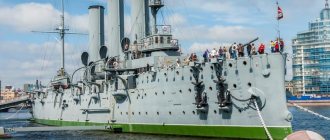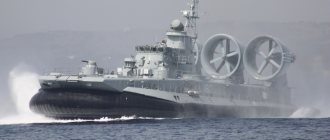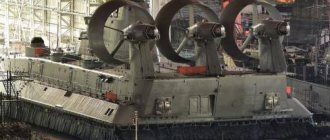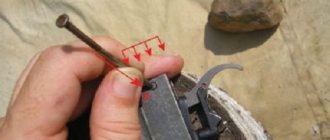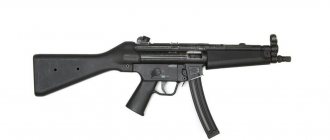Why is this rifle interesting?
It will surprise many, but this weapon, which was once in service with the army, is... pneumatic. Yes, the mechanism here is exactly the same as in “air guns”, from which you can shoot at any shooting range and which are not at all perceived by adults as something serious.
In fact, attempts (not always unsuccessful) to create effective air weapons have not been abandoned by humanity for more than two thousand years. The first working samples were discovered on the territory of Ancient Greece. However, for the most part, for some reason (complexity of manufacture, capriciousness in use, low efficiency), they were all rejected.
The exception is the Girardoni gun, which is practically devoid of all the above-mentioned disadvantages.
History of creation
Surprisingly, it was the creation and widespread distribution of firearms that became the impetus that forced gunsmiths to look for alternative solutions. Considering all the shortcomings that the squeaks and muskets had, they tried, if not to improve them, then at least to find workarounds.
It is worth saying that the Girardoni fitting is far from the first pneumatic combat weapon. Quite effective solutions were found at the beginning of the seventeenth century. A variety of pistols, rifles and even shooting canes were made to order by craftsmen at the request of wealthy clients. Some used such silent weapons for self-defense, while others even used them for poaching, so as not to attract the forester with a shot. However, all of them turned out to be not good enough to become widespread - most did not go beyond discussion in a narrow circle of masters.
Everything changed when in 1779 Bartolomeo Girardoni demonstrated his brainchild. It was he who presented the Austrian Archduke Joseph II with a multi-charged pneumatic weapon. By the way, the Austrians stubbornly consider Girardoni a Tyrolean, that is, almost their fellow countryman. In fact, he was Italian, which is clearly confirmed by his last name.
The test results impressed the Archduke so much that he decided to put the rifle into mass production and equip special border guard units with the new weapon. Of course, the creator began to supervise the entire project; Girardoni chose not to show the drawings of the air rifle to anyone.
When did rifles appear?
The first such structure was discovered in the 16th century. Initially, this product was called a screw gun, which was rifled and threaded. The first large-caliber rifle was invented by the Germans. The device was long and very heavy. Later, a short modification of the rifle gun appeared, which was called a carbine. The lightweight version was called a musket, but this device could only fire once, and then another charge was required. No one has heard of pneumatics yet, but there have been attempts to create them.
The Girardoni rifle looks presentable, very similar to a musket. It is difficult to understand that this is a pneumatic gun that appeared in the mid-18th century. The mechanism resembles the “air” device that can be seen in any shooting range. For the first time, they tried to create a high-quality pneumatic gun in Ancient Greece, but without success. Only the mechanic Girardoni succeeded, who took into account all the mistakes of previous developers and created a weapon without flaws. A true work of art for that time.
A talented mechanic, when creating the weapon, eliminated all the shortcomings that the muskets of other masters had. Back in the 17th century, craftsmen were looking for alternative solutions, only Girardoni was able to put together effective techniques into a single whole. The first to see the device was an Austrian of blue blood. He ordered tests to begin, the results of which pleased all the military leaders. The Austrian Duke decided to put the rifle into mass production and equip special border guard units with new weapons.
These guns with round bullets caused a lot of trouble for Napoleon, and also left their mark on American history. A group of travelers met an entire tribe of Indians. The 33 Americans had Girardoni with them and a large supply of ammunition. Only thanks to these weapons were they able to fight off the Redskins. The Indians knew about the power and rate of fire of this pneumatic weapon and decided not to attack the travelers.
For a long time, the mechanic kept the drawings and calculations of his notebook in the strictest confidence, so he was appointed curator of the mass production project. The mystery still remains unsolved of how the creator began to collaborate with the Austrians, because he himself was from Italy.
Main device
The design of the rifle was quite simple, although it required maximum precision during creation - the slightest gaps or non-compliance with the standard led to a sharp decrease in efficiency or even made use impossible.
The barrel of the weapon was octagonal and rifled. Moreover, the caliber turned out to be quite serious - 13 millimeters. The role of the butt was played by a compressed air cylinder. It was connected to the barrel through a percussion metering valve and breech. The connection was securely sealed with a leather cuff soaked in water. A non-removable tubular magazine, attached to the right, right along the barrel, contained as many as 20 round bullets.
It is worth noting that the cylinder was carefully designed and, as they would say today, had a very ergonomic shape - it was very convenient to work with it.
The air was pumped up in a timely manner, before the battle. Still, in order to create the required pressure in it (about 33 atmospheres) it was necessary to pump it with a hand pump about 1500 times. Particular precision was required here - if you create too little pressure, the firing power was sharply reduced. At increased pressure, the thin walls of the cylinder (this is what made it possible to reduce the weight of the weapon) could not withstand it, which would lead to an explosion.
In 1779, the Austrian mechanic Bartolomeo Girardoni (in Austria he was considered a Tyrolean, although he was Italian by origin) presented Joseph II, Archduke of Austria, with a copy of a multi-charge air gun, which became perhaps the most popular military air weapon. It would be more accurate to call this unique gun a magazine-loading breech-loading air rifle with pre-pumping. The active Archduke and members of the Military Council appreciated the idea. Their initial desire to equip army rangers with a rifle was dashed by the relatively low target firing range, and the rifle (gun) was adopted by a special unit of the border guard. It is interesting to remember that more than a hundred years earlier, in 1670, the great German scientist G. W. von Leibniz, drawing up a draft military code for the German lands, proposed replacing dangerous and inhumane firearms with store-operated (!) air guns. The Ghirardoni rifle had an octagonal rifled barrel of 13 mm caliber, a replaceable balloon stock, an impact metering valve and a tubular magazine for 20 round bullets. The conical cylinder was connected to the breech on a thread, the connection was sealed with a water-soaked leather cuff of the butt-cylinder. The air was pumped into the cylinder with a hand pump (this required about 1,500 swings), the pressure in it reached 33 atmospheres, which was enough to give a 10-gram bullet an initial speed of about 200 m/s (muzzle energy - 200 J). One cylinder was enough for 20 sufficiently lethal shots, although the ballistics, of course, changed from shot to shot - the first 10 bullets flew up to 150 steps, the next ones fell closer. The cylinder was replaced by the shooter with a spare one in combat conditions. The trigger mechanism was cocked using a lever imitating the trigger of a flintlock gun with a developed spoke. When the trigger was pressed, a blow was made to the valve pin, which briefly opened the tank. The barrel bore was locked with a transversely sliding bolt, pressed to the right by a leaf spring. The bullets were placed in a tube fixed to the right along the barrel; this permanent magazine was loaded through the front lid that folded to the side. To reload, it was necessary to move the bolt to the right and raise the weapon with the barrel up - the bullet, under its own weight, fell into the bolt socket, after which it returned to its place and was kept from moving by a spring. The gun had a permanent sight with a rear sight soldered to the top edge of the barrel. One gun was equipped with two spare butt cylinders. The gun also included a bullet gun, a standard bullet (pneumatic weapons required greater accuracy in casting bullets), and four tin cases containing 20 bullets, which speeded up the loading of the magazine. A pump was provided for every two guns. Setting up production of the Ghirardoni rifle took several years - manufacturing weapons with the required precision required highly qualified craftsmen, and the craftsmen were sworn to a special oath of secrecy. It is clear that the shooters also had to undergo special training in handling such delicate weapons and preserving them (for example, periodic wetting of the butt cuff was required, pumping air into the cylinder also required caution - sometimes the cylinders burst). The obvious shortcomings of the weapon were compensated by equally obvious advantages: a high rate of fire for that time (20 rounds per minute versus the usual 5-6), a low-noise, flameless and smokeless shot, weak recoil, relatively high accuracy at short ranges (muzzle-loading fittings of that time also made it possible to obtain high accuracy, but loading them was too slow), the ability to fire in rain and snow. The Austrian border guard riflemen used Girardoni rifles from 1790 to 1815, just during the coalition wars with France. In battles with French troops, they hit officers and artillery personnel at 100-150 steps. It is clear that such an insidious weapon greatly irritated the French - Napoleon decided to give the order to shoot or hang on the spot shooters captured with an air gun in their hands (in 1807 the French themselves tried to arm miners with air guns, but to no avail). The use of Girardoni rifles is also mentioned in battles with Turkish troops, when Austria took part in the Russian-Turkish war - in any case, several such examples have been preserved in Russian museums. This weapon can be called one of the prototypes of silent special purpose weapons. After the death of Girardoni, there were no experts left capable of maintaining the weapons in good working order, and their effectiveness was questioned by many, and in 1815 the last guns were handed over to the armory; some examples surfaced during the unrest of 1848-1849. After the Congress of Vienna in 1815, the Danish king Frederick VI took home the Girardoni rifle and ordered to study the capabilities of such weapons. N.Y. Loebnitz even developed multi-barreled pneumatic weapons like the old organs or the grape guns that appeared later, but the work was not successful. It is interesting to mention that in the 1820s. Manson in England, ignoring experiments with pneumatics, proposed introducing the bow into service with the British Army as a silent weapon. The outstanding French gunsmith S.I. Pauli tried to use the energy of compressed air for another purpose - igniting the powder charge in his breech-loading gun. This original idea of combining pneumatics and firearms was embodied 180 years later, again in Austria (!) - in 1995, the company released the 5.56-mm VETs-91 rifle and the VETs-95 pistol chambered for the V/L caseless cartridge, a charge of smokeless powder which is ignited by a stream of air under sharp compression. But this is a different topic.Others also tried to use the Girardoni system - for example, the Viennese gunsmith J. Kontriner modified it in his 20-round 13 mm hunting rifle, but did not achieve commercial success. The attempts of Schember in Vienna (1830) and Staudenmaier in London (1800) were no more successful. Firearms entered a period of rapid development (capsule-loading weapons, breech-loading weapons, metal cartridges, etc.), while pneumatic weapons remained the domain of individual gunsmiths. The French inventor Carbon offered the military department his 4.5 mm rifle with a gas cylinder, which should have been enough for 800 shots, but the system turned out to be too capricious. However, production technologies also developed, and in 1876 Henry Marcus Quackenbush patented an inexpensive air rifle design quite suitable for mass production for indoor shooting at a distance of up to 10 m. The Quackenbush rifles, produced in several modifications in the USA and Germany, and the Daisy rifles (system Clarence Hamilton 1888) laid the foundation for the widespread popularity of air guns as cheap and relatively safe training and sporting weapons.
They were still trying to return to combat pneumatics. In particular, during the Second World War, now directly in connection with the need to create special-purpose weapons. A lot of work has been done in the UK. Air weapons were taken quite seriously here; English hunters shot from air rifles and B.S.A. shotguns. small game: black grouse, partridges, hares. Of course, a person is not a partridge, but pneumatic weapons seemed attractive, thanks to the same low noise, low pressure levels (and therefore low recoil) and temperatures in the barrel bore. This would make it possible to use it at short ranges to disable the enemy, surveillance devices, security systems, and fire special bullets. Low noise was especially attractive to the British Office of Special Operations - silent firearms were then at the beginning of their development, pneumatics and crossbows still seemed like a good alternative (as was the case with hunting weapons in their time).
Excerpt from an article published in the magazine 'Weapons' (08/25/2003)
Equipment
Of course, no one would even think of pumping air into a balloon directly on the battlefield. Therefore, the developers took care of the possibility of quick recharging. The Ghirardoni air rifle was supplied with a replaceable cylinder. It is quite reasonable to inflate two cylinders in a timely manner so that during a battle you can quickly replace them and continue firing.
In addition, the kit necessarily included four tin pencil cases, each containing 20 round bullets. Using them, it was possible to quite quickly, right during the battle, load an empty magazine, instead of inserting bullets one by one.
At the same time, the developers decided that it was not very reasonable to equip each rifle with a pump. Therefore, they entered the army with the expectation of one pump for two rifles. Needless to say, under normal conditions this was quite enough.
However, each soldier had to have maximum autonomy and not depend on supplies from warehouses. Therefore, he made the bullets himself - a bullet gun was also included with the rifle. Moreover, the accuracy of the manufacture of projectiles had to be maximum - even a slight error could lead to the bullet getting stuck in the barrel. Therefore, there was always a standard bullet that the shooter looked up to.
Experimental guns from the 17th century that were ahead of their time
Firearms changed the face of war—even heavy metal plates no longer guaranteed safety. But one problem still remained - the rate of fire. After all, before the invention of unitary ammunition, everything had to be loaded manually, and even the fastest and most agile soldier could not fire more than four shots per minute. But this was clearly not enough, especially given the widespread use of linear tactics, so various designers tried to come up with a way to increase the rate of fire. Some of these experimental guns were successful, some not so much. But with the advent of more advanced cartridges, they all went to the landfill. But we’ll tell you about them anyway - very interesting approaches were used in them.
Lorenzoni's shotgun
Italy, seventeenth century. Designer Michele Lorenzoni creates a reloading scheme that allows for a fantastic rate of fire - almost 20 rounds per minute. In this case, reloading is carried out with a slight movement of the hand. One minus is that you have to aim again every time, but these are details. What did he come up with?
Initially, the scheme was tested on pistols, and only then adapted for rifles. The meaning was as follows: in the wooden butt there were 2 channels - with bullets and with gunpowder. Both channels rested on a rotating drum with two recesses. When reloading, the gun tilted the barrel down, the drum turned until it “clicked” - gunpowder spilled out of the channel under the influence of gravity and the bullet fell down. Then the drum rotated and the bullet fell out on the other side, where it rested against the damper. Then gunpowder was poured in there, the drum was turned, the barrel was raised, the shutter was removed, and the shot was fired. Repeat until you run out of enemies or projectiles. By the way, this design was not difficult to reload (add gunpowder and bullets), since the channels could easily reach the edge of the butt, where they were covered with plugs.
Brilliant, right? By practicing actions until they were automatic, it was possible to increase the rate of fire to values unimaginable at that time. And everything would be fine if not for 2 small problems.
The first problem was that the entire charge of gunpowder was stored in the butt, so the slightest spark could cause an explosion that could, if not kill the shooter. then tear something off for him. And any hit in the butt could end with this. Risky? Very.
The second problem was much more difficult. The design required incredible precision. So that there is no accidental spark when the drum rotates, so that nothing gets stuck, so that, God forbid, the damper does not remain in place. In short, EVERY experimental gun had to be worked on for several days, and only by qualified gunsmiths.
Nevertheless, Lorenzoni's guns were produced for quite a long time. But it was an expensive weapon that only really wealthy officers could afford. However, the idea itself never found mass popularity. And it didn’t work out to simplify it. And then they came up with a new type of cartridge.
Pakla's gun
1718 England. Lawyer James Puckle patents an experimental gun , which later became the prototype of a machine gun. What was the principle?
The very idea of a rotating drum that consistently feeds bullets has existed since the 16th century. But these drums only fed bullets, and you had to add gunpowder yourself, so they weren’t particularly popular. And Puckl guessed to use REMOVABLE drums, already filled with gunpowder and loaded. Inserted the drum, fired, turned, shot, turned, and so on 11 times. Pulled the drum out, replaced it, repeated. In this case, the experimental gun was mounted on a tripod, which ensured excellent shooting stability and high accuracy. There was no need to aim again every time.
Sounds tempting, doesn't it? But it was not without its drawbacks. Critical, by the way.
A tripod for stabilization is very good. But the total weight of this structure almost suggested the use of a “gun crew” for movement. That is, there is no mobility. And the removable drum turned out to be not so reliable. There were misfires and jamming. Plus, it was not supposed to be reloaded directly on the field - only in calm conditions. And this gun was expensive - although cheaper than the previous version, it was much more expensive than ordinary silicon ones. So it never found wide popularity.
Gun Girardoni
1779 Austria. Gunsmith Bartolomeo Girardoni demonstrates to the Austrian Duke a rifle that operates on an absolutely revolutionary principle. What can you say about an AIR RIFLE that can kill a man at 150 paces?
I'm not kidding. This is a real-life military weapon adopted by the Austrian military rangers. Damn it, this was almost the first truly effective sniper weapon. At the same time, with an impressive rate of fire. There was no need to add gunpowder, set it on fire, or wait for the shot. Pressing the trigger - it hits the valve of the air cylinder, displacing it for a fraction of a second, which was enough for the escaping air to give the bullet a speed of 200 m/s. As a result, the rangers could accurately knock out enemy officers, remaining practically out of reach of return fire. And silently, without unmasking flashes or smoke.
There were also some disadvantages. Pneumatics, as you understand, work better the more fully the cylinder is charged. So only the first 5-10 shots out of 20 (yes, damn it, a magazine for 20 shells that were fed automatically) hit a phenomenal distance. And then the efficiency decreased. However, the cylinders could also be changed. Right in battle, without disassembling the rifle into small parts - simply unscrewing the metal balloon-stock and replacing it with a new one of the same kind. And the cylinder itself can then be recharged using a hand pump.
The main disadvantage was the enchanting complexity of the design. Which even master Ghirardoni’s students could not repeat after the death of their teacher. So yes, while the gunsmith was alive, the Austrian huntsmen gave everyone a “light.” And then I had to get out.
As you can see, the rate of fire problems were solved. But the problems of high cost, difficulty in manufacturing and maintenance - alas, no. Therefore, regular troops preferred to use 20 men armed with standard rifles rather than one soldier equipped with an experimental rifle . This was more profitable both in price and in the total rate of fire. But the ideas used in these incredible guns were truly innovative. And gunsmiths actively resorted to them in the future.
Effective range
A good shooter could confidently place a bullet at a distance of up to 150 meters. Modern gunsmiths find this downright ridiculous. However, for its time, this range was more than impressive - conventional firearms could only dream of such efficiency.
Yes, the powerful pressure created by compressed air from the cylinder accelerated the bullet to 200 meters per second. This was quite enough for a heavy bullet to hit an enemy located 150 meters away. True, there was a nuance here: such speed was ensured only during the first ten shots. Then the pressure in the cylinder decreased noticeably. Therefore, the combat range was sharply reduced, and completely different adjustments had to be made when shooting at long distances.
However, it is worth considering that in one minute a good shooter could confidently empty the magazine, that is, fire 20 shots. Compare this with the muskets of that time, which hit well if at half the distance and had a rate of fire of no more than 5-7 rounds per minute. In addition, having hidden from enemy fire, the shooter could quickly load new bullets into the magazine, change the cylinder and fire another 20 shots. Of course, such almost hurricane-force fire caused enormous damage to the enemy, and at the same time a psychological blow - this weapon had a painfully unusual effect.
Rifle use
Due to the speed of the bullet's release and ease of use, these streams became of interest to the Austrian military. They say that they entered into an agreement with the Italian master and wanted to equip their army with this weapon. To do this, the creator moved to Austria and headed the mass production of rifles. By the end of the 18th century, many wealthy European citizens had this fitting. Most often it was purchased for self-defense or collection.
This pneumatic gun easily hit the target from 150 meters. High speed was ensured only during the first ten shots due to the high pressure in the cylinder. The device was used not only in the army, but also as a product for self-defense. These weapons could be found in any home, because air rifles do not require a permit.
Now every gun collector wants to get this product.
Usage
Handling the weapon was very easy and simple. After firing a shot, the shooter simply moved the bolt back and slightly tilted the rifle with the butt down. Under the force of gravity, the bullet shifted into the bolt chamber. After this, the shooter released the bolt, which immediately returned to the place where it was held by a spring from moving.
Compare this with other rifles of the time, when it was necessary to load a charge of gunpowder through the muzzle and spray it with a cleaning rod. Then insert the bullet there, install a primer or even a piston, and only after that fire. But all this had to be done not on a dry and safe training ground, but during a hurricane battle - due to the rush of adrenaline, even experienced soldiers’ hands were shaking, and it was very difficult to complete the entire operation!
Therefore, it is not surprising that the Girardoni pneumatic multi-charge fitting was a considerable success; experts predicted a great future for it.
Features of the Girardoni rifle
In the 18th century there were not many types of firearms. The first thing the designers paid attention to was the convenience and ease of use of the device. The product is not heavy, elegant in shape, with steel and wood inserts. The design still attracts the attention of fans of firearms. Experienced shooters noted other positive features of the mechanism:
- Cleaning and using the device did not cause any difficulties.
- In order to reload the gun, it is enough to twist the bolt and break the product. Under the force of gravity, the bullet fell into the bolt socket.
- To prevent the bullet from moving in the bolt, a spring is built into the barrel, allowing the charge to be accurately sent to the target. Unlike other muskets, the new rifle did not require a charge of gunpowder to be sent through the muzzle.
- Durable steel ensures long service life, resistance to aggressive conditions and climatic changes.
- There is no need to spray the fire material with a cleaning rod. It was precisely because of the long chain of manipulations that the armed soldiers could not stop the enemy. They simply did not have time to load their weapons properly.
- Work in any weather conditions. Temperature and air humidity do not have a negative impact on the efficiency of individual parts. Anti-corrosion effect due to high-quality steel.
- A rate of fire that was not shown by any device of that time.
- Low noise and stealth. The person could easily go unnoticed: little smoke from the shot, low noise level, no flash.
- The price for the device is high, but this product is a type of manual labor. Every detail was made with jeweler's care and precision.
- The uniqueness of the drawing. The creator kept notes, drawings and designs of individual parts in the strictest confidence.
The multi-charge fitting was highly praised by critics because the technical characteristics of the device were impressive.
| Characteristic | Parameter |
| Caliber | 13 mm |
| Barrel length | 200 mm |
| Barrel type | smoothbore |
| Ammunition type | round bullets |
| Magazine capacity | 20 |
| Shot speed | up to 200 m/s |
| Rate of fire | 6-7 rounds per minute |
| Power | 2 J |
| Aim | front sight, dovetail |
| Energy source | spring |
| Weight | 2300 grams |
In addition to good performance for that time, the pneumatic gun had an attractive appearance and a relatively small size, which made wearing it easier.
Main advantages
One of the important advantages was the range and rate of fire, which have already been discussed in detail above. But the advantages of the rifle do not end there.
This also includes silent shooting - very convenient if you have to shoot from an ambush, for example, from dense bushes. In addition, there is no unmasking smoke, as when using gunpowder. Accordingly, an experienced and cold-blooded shooter, having chosen a convenient position, could destroy an entire enemy detachment before he was discovered.
There was virtually no recoil, which made shooting even easier. Even after firing 40 bullets in a row, the shooter did not feel fatigue or pain in his shoulder.
At a distance of up to 100 meters, the Girardoni air rifle provided excellent accuracy.
Finally, the battle could be fought in conditions of strong wind, snow and rain - there was no gunpowder, which could become damp, or a primer, which was sometimes blown away by gusts of wind.
Existing disadvantages
Alas, any weapon that has advantages is not without certain disadvantages. However, the weapon itself did not have any disadvantages at that time. However, the shooters had to be retrained or trained from scratch, because getting used to pneumatics after firearms turned out to be quite difficult.
In addition, Ghirardoni's blowguns were noticeably more difficult to manufacture than conventional rifles. Maximum accuracy was required - the slightest errors made the weapon completely unsuitable for accurate shooting.
Decline of the genius of pneumatics
Alas, Girardoni, reveling in his exclusivity, did not want to share the secrets of manufacturing and maintaining weapons with anyone. Girardoni also did not show the drawings of the rifle to anyone. As a result, soon after his death, most of the rifles simply became unusable. There was no one to repair them or carry out appropriate maintenance to increase their service life.
Therefore, by 1815, the last operational and out-of-service rifles were handed over to the workshop. Some from there migrated to museums, while others were distributed throughout the world, both as souvenirs or gifts, and for further military operations.
Pros and cons of weapons
Any user primarily noted the rate of fire and range of bullets. The main disadvantage was the long inflation of the balloon. I had to do more than 1500 pumpings. Other advantages and disadvantages:
| Advantages | Flaws |
| High muzzle energy. If you inflate the main and spare cylinders, you can shoot all day. To bring the gun into firing position, it is enough to twist the bolt and break the barrel. | Quite expensive, there are cheaper analogues on the market, but if you look at it from the point of view of historical value, the minus is insignificant. |
| Repairable. Withstands harsh weather conditions. The shooting efficiency does not decrease even in strong winds and heavy rain. | The shooting features will confuse you. A person has to relearn the art of using air guns. |
| There is no recoil, even after prolonged shooting. Even at long distances, excellent accuracy is ensured. This gun could be fired from an ambush. | After disassembly, it is important to carry out precise reassembly. Any deviation, even a small gap, will result in the product not firing. |
| Silent shooting. The dimensions of the gun allow it to be fired from an ambush. There is no unmasking smoke that accompanied every shot of a conventional musket. | A wooden handle loses its aesthetic appearance with regular use. Polishing will not help, only replacement. |
Having studied the diary of a military captain from Austria, it became clear that the army actively used this stream. Unlike a musket, it fired silently, without smoke screens. Therefore, a soldier, as a sniper, could sit in ambush and shoot opponents. When production was put on stream, most army garrisons were able to arm themselves. This was influenced by the numerous advantages of pneumatics and high technical characteristics.
It is worth paying tribute to the creator of the rifle, he did not want to share the drawings of his brainchild with anyone, but this steadfastness led to the fact that after the death of Girardoni, production stopped. Not a single craftsman was able to exactly replicate the design, and it was also difficult to maintain the devices, which significantly increased their service life. Now the product is among collectors as a souvenir and reminder of the brilliant mechanic from Italy.
In 1815, this pneumatic gun fired for the last time.
Followers of Girardoni
But the idea did not die out. New air rifles have appeared in different European countries. Thus, N. J. Lebnitz developed a multi-barreled weapon resembling a grapeshot. The Viennese gunsmith Kontriner created a new hunting rifle with 13 mm bullets based on the Ghirardoni rifle. In London the name of Staudenmaier briefly became known, and in Austria - Schember. All of them created more or less successful weapons using compressed air. Alas, they failed to repeat Girardoni’s success.
Military use
The most widespread use of the Girardoni pneumatic fitting was observed in Austria, from 1790 to 1815. Local border guards made excellent use of them - the war with France arrived just in time.
Sharp marksmen knocked out French artillerymen and gunners at a distance prohibitive for firearms. Without noise or smoke, Napoleon's soldiers fell as if they had been killed, giving rise to almost superstitious fear among the survivors.
An angry Napoleon even gave the order to execute every enemy soldier captured with a Girardoni rifle on the spot, rather than take him prisoner, as military laws required.
Rifle in US history
These weapons played a certain role in US history. The Girardoni rifle, a photo of which can be seen in the archives, was in service with Lewis and Clark, travelers who paved the way across the entire United States from east to west and back.
The expedition was very dangerous. She passed through lands inhabited by both hostile Indians and tribes who did not even know about the existence of white people. Perhaps it was Girardoni’s rifles that allowed the small detachment (only 33 people) to travel the entire route without fighting. Even the most warlike Indians, armed with modern firearms, preferred not to attack travelers armed with weapons that kill completely silently, and even at such a long distance. The lack of familiar manipulations with loading weapons also played a role, creating an aura of something supernatural around the rifle.
Moreover, although there were only a few rifles in the detachment, Clark and Lewis were in no hurry to tell the Indians about it. As a result, they were confident that everyone in the squad was armed with a miracle weapon.
Having demonstrated their weapons several times, killing deer at extreme distances, the travelers proved to the warlike Indians that it was better not to mess with them.
The Mystery of the Girardoni Gun
In our country, probably everyone knows this weapon - children, adults, sons, fathers, and grandfathers. Back in the early 50s of the last century, the craftsmen of the Izhevsk Arms Plant were given the task: to create a simple, unpretentious, safe, cheap and reliable air rifle for training in shooting - such that both adults and schoolchildren could shoot from it. This is how the famous “aircraft” was born, aka “breakthrough” - at first it was called “IZH-22”, then “IZH-38”, now it is called “MR-512”, or (unofficially) “Murka”. Many people are willing to buy such a rifle even now – say, for recreational shooting “at cans” in the country.
Aircraft IZH-22 (1966)The author of the text loved going to music school a long time ago. In general, children don’t really like going to music school anymore, but... the fact is that there was a shooting range on the road from home to school! And in order to quickly and without whims have lunch, change clothes, collect the violin with notes and run to the music room, dad gave out 30 kopecks each time - that is, for as many as 10 shots from the air! In those years I still didn’t have enough strength to break and load a rifle, and either my dad or an employee of the shooting range loaded the weapon. The rifle was placed on the stand, I carefully, “like an adult,” took aim, and pressed the tight trigger. If a bullet hit a target, knocked down a cardboard steamer, or made a toy windmill spin, I would simply jump with delight.
This rifle is familiar to all children of the 60s...
The mechanism of operation of the “air gun” is surprisingly simple - it does not need any gunpowder, no cartridges, no primers. The most ordinary air is drawn into the empty cylinder. When you press the trigger under the action of a powerful spring, the piston compresses this air, and with its pressure it forcefully throws the bullet out of the barrel. Exactly like the wind pipes of the South American Indians. Or schoolchildren’s favorite “spitters” made from empty ballpoint pens - the same ones that are so fun to shoot chewed pieces of paper at recess...
The blowpipe of South American Indians is the distant ancestor of all air pipes
And every boy who has held a “balloon” in his hands at least once will sooner or later have a question: how “real” is this weapon? Or is it still “half a toy”? Can the "aircraft" be used in real combat? Usually dads, grandfathers and life safety teachers answer “no” to this question. And they are wrong!
Let's fast forward 250 years ago, to the time of Empress Catherine II. At that time, the main weapon of all armies in the world (Russian was no exception) was a smooth-bore musket with a flintlock. Long, heavy. The target firing range of this one was small, about 100 steps, or even less. When fired, a dense cloud of powder smoke burst out of the barrel - during battles, the smoke from numerous shots completely covered the sky and the sun, a soldier could easily get lost in such smoke! It was necessary to load such a weapon while standing, and the process was long and inconvenient. Even the most experienced and skillful shooter could not fire more than 3-4 shots in a minute, let alone beginners. And such a weapon could not fire in the rain!
In those years, Austria was ruled by Archduke Joseph II, King of Hungary and Bohemia, a brilliantly educated man, a great connoisseur of science and art. Once, the Italian gunsmith Bartolomeo Girardoni asked for an audience with the king, promising in a letter “to demonstrate something hitherto unheard of and unseen in any country.” And the master did not deceive! In his hands he had a weapon such as neither the king nor his courtiers had ever seen in their lives.
Girardoni rifle, 1789
At first glance it was a small, light musket - but what a musket! It freely hit a target at a distance of 150 steps, which was a fantastic sighting range for that time. There was no smoke when fired! The shot was almost silent! This musket could be reloaded standing, kneeling, lying down, or even upside down! He could shoot in snow and pouring rain! But the main thing is that he fired 20 shots per minute!! Both the king and his minister of war were simply shocked!
The main secret of the Girardoni gun was that it was pneumatic - that is, in modern language, it was an “air gun”! Instead of a butt, the master installed a sealed cylinder into which air was pumped with a pump. Adjacent to the barrel was a magazine for 20 round lead bullets. In order to drive the next bullet from the magazine into the barrel, the shooter just had to cock the trigger - let me remind you, this all happened in 1779, when, excuse me, even the steam locomotive had not yet been invented! When the trigger was pressed, the valve opened and compressed air pushed the bullet out of the barrel.
Scheme of operation of the Girardoni rifle mechanism
One air cylinder was enough for 30 shots, so the master provided the ability to quickly change the cylinder to a spare one.
Please note: General rules when choosing a gun for hunting.
The Austrian military simply had their eyes wide open in surprise at such an example of “ultra-modern high technology.” The king immediately ordered a contract to be signed with Girardoni - on any terms! - and accept the master’s rifle into service with the elite units (now they would be called “special forces”) of the Austrian army. Of course, under a huge secret. Girardoni himself flatly refused to reveal the secret of the design of his rifle - he did not even show the drawings to anyone. One of the terms of the contract was that the master would make and repair each of the rifles himself.
When the wars with Napoleon began in Europe, the French experienced the effectiveness of “aircraft” on their own skin. A shot from a Ghirardoni rifle did not produce smoke that would reveal the shooter, was practically silent and at the same time lethal. The Austrian riflemen, remaining invisible and inaudible to the enemy, shot at the French patrols from ambushes, and they absolutely did not know what to do! They imagined death behind every bush... When information about the secret weapons of the Austrians reached Napoleon himself, he ordered to obtain such weapons at any cost. Fulfilling the order, the French captured several Girardoni rifles; French gunsmiths tried to copy the design, but... it didn’t work out! Napoleon was furious. So much so that (according to the legend) he gave the order for Austrian soldiers captured with pneumatic weapons not to be taken prisoner, but to be mercilessly executed on the spot.
While the Napoleonic Wars were raging in Europe, in North America, in the USA, scientific, primarily geographical, research was in full swing. At that time, the United States of America remained more than half unexplored territory - Americans did not even know about the existence of the Rocky Mountains! So, in 1803, President Jefferson ordered a large expedition to be equipped for the most detailed exploration of the “wild west” - right up to the Pacific coast.
Map with the expedition route
The expedition faced numerous dangers - weather, harsh climate, and numerous Indian tribes, often extremely aggressive and hostile. Therefore, the leaders - Captain Meriwether Lewis and Lieutenant William Clark - received the strictest instructions to equip the expedition with the latest science and technology of the time. After thinking about it, Lewis and Clark ordered Girardoni rifles from Austria.
Lewis and Clark, expedition leaders
The expedition lasted for three long years - during this time the researchers had to repeatedly encounter different Indian tribes - Lakota, Omaha, Shoshone and so on. Not all of them were friendly to whites! However, at every meeting with the Indians, the whites showed the Indians miracle weapons - rifles that fired almost silently! Rifles that easily took down a deer at a distance of 150 paces! Finally, rifles that could fire every 3 seconds - without reloading, without ramrods, without gunpowder, wads or paper cartridges! Some Indian leaders, having seen such magic, immediately expressed a desire to “declare peace with the wise white fathers from the east” - these were awarded a special “peace medal”. Others still tried to attack the detachment of Lewis and Clark, the temptation to rob the expedition was too strong. But that was not the case - Ghirardoni’s rapid-fire rifles allowed the small detachment to easily fend off the attack of the Indians, armed with “ordinary” flintlock muskets... The expedition was simply brilliant at that time - in 3 years the detachment lost only one person, and even then - not in battle with Indians, but because of a serious illness.
Lewis and Clark's meeting with the Indians
But what happened to the miracle weapon next? But then something strange happened. Around 1815 (the exact date is unknown to anyone), Bartolomeo Girardoni died without revealing to anyone the secret of the design of his rifle. In Europe, Russia and America of that time, many skilled gunsmiths worked - but none of them succeeded in either copying the design of the unique “air gun” or even repairing a rifle that had fallen into disrepair (there is information that our Tula craftsmen were also ordered to copy the Austrian “air” didn’t work either)! The generals of all the armies of the world were furious, but they could not do anything. The cylinders made by masters did not hold pressure, the leather valves let air through (“poisoned”), and the bullets did not fly out of the barrel! All parts of the Ghirardoni mechanism were made with precision, which in those days was beyond the realm of science fiction. The construction materials also raised questions, especially the air tank, valve and springs. The springs of that time, made of non-uniform steel, with frequent strong compression and stretching, quickly became unusable, lost their elasticity, and broke. Yes, a copy of the Girardoni rifle can be made using modern
technologies - but at the beginning of the 19th century, no one in the world possessed such technologies... “The Mystery of Girardoni” still torments historians - how could a master create such a perfect repeating air rifle in those days? Yes, not just one - about one and a half thousand Girardoni rifles were made... And then no one - no one in the world! – I couldn’t copy the design or even repair it. Interesting, isn't it?
